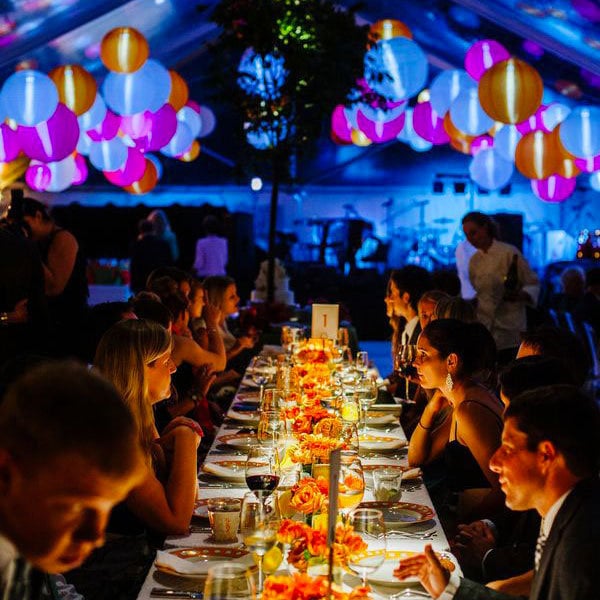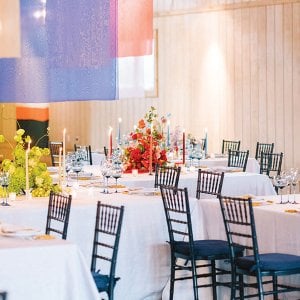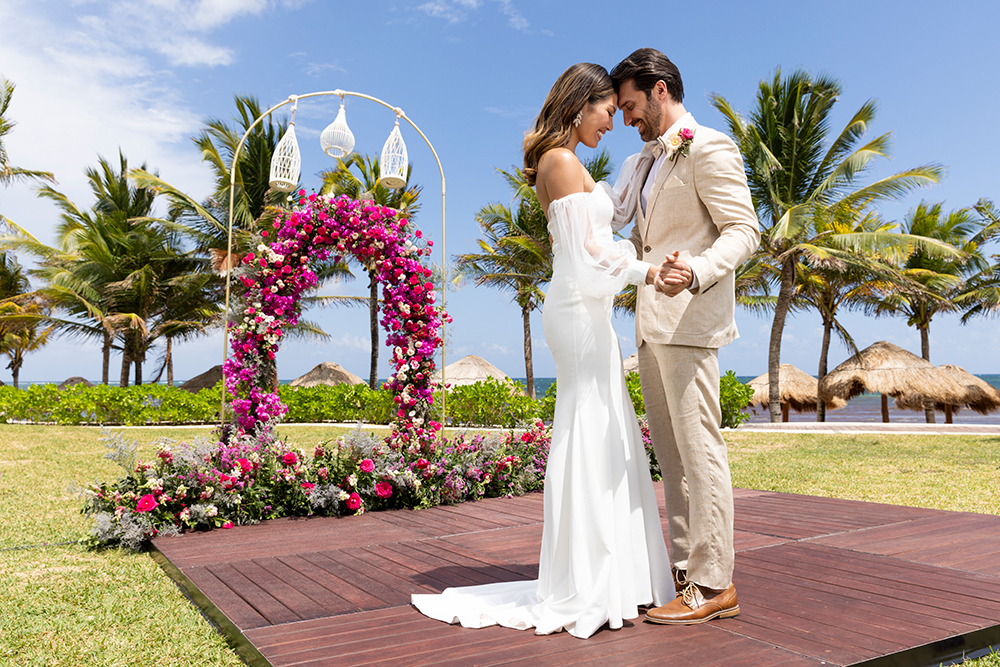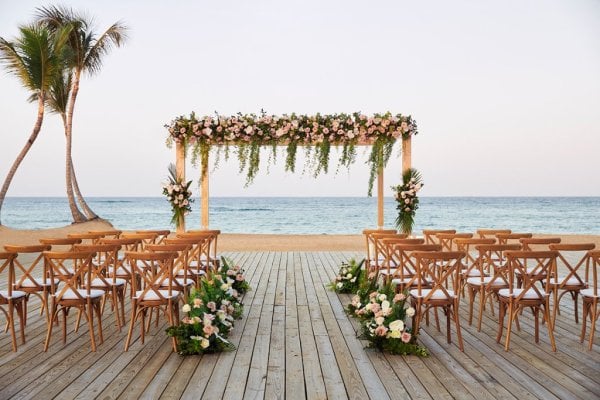Get ready for toasts, speeches, dancing, cake — and don't forget to eat! Use this guide to make sure your reception flows smoothly.
After the solemnity of the ceremony, it's time for a celebration. Many reception traditions have developed over time to become an expected and enjoyed part of the marriage ritual. While the course of events will vary somewhat from wedding to wedding, here's a general idea of how things traditionally proceed.
Basic Reception Timetable

Photo Credit: Bethany & Dan Photography
The typical wedding reception lasts four hours — plenty of time to celebrate in traditional fashion. Here's a quick look at the usual timetable, complete with don't miss rituals:
Hour One: Bride and groom, attendants and family pose for wedding pictures (unless they were taken before the ceremony). Here are the traditional must-have photos. Receiving line is formed as the bridal party arrives. Cocktails and hors d'oeuvres are served.
Hour Two: Guests take their seats for the first course, kicked off by a champagne toast, usually offered by the best man. Others, such as the bride's father or the maid of honor, may also say a few words (get advice on how to ace your toast!). Some couples prefer to have their first dance, followed by father-daughter and mother-son dances, now.
Hour Three: Bride and groom my enjoy their first dance, and other noteworthy dances, if they haven't already. The main course is served, and guests mingle and dance.
Hour Four: The cake is cut and served. The bride tosses her bouquet, and the groom tosses her garter (both are optional). Guests begin to leave. If yours is a group you know will want to party on, inquire with your reception site when you book about paying for extra time. This will require either a set fee (to cover the staff) or a per-person fee to keep the bar open, or both. You'll also have to pay your band or DJ extra, naturally. Another option: Designate a nearby club or bar and let everyone know they can head there to continue the fun.
Tips & Tricks
Make it last. It might be tempting to save money by scheduling a short reception — say, three hours — but that may not be long enough for cocktails, dinner, dancing, toasts and speeches, the cake-cutting, and so on. You should not have to spend the greatest party of your life with one eye on the clock, so plan for enough time to really enjoy the festivities.
Toasts and speeches can add a memorably personal note, but they can also bring the party to a halt if they are ill-timed or too long. Decide in advance who will talk at particular points in the evening, and encourage the speakers to keep it brief (but heartfelt).
Do not schedule the cake-cutting too late, since guests are not supposed to leave before it. Even if you want the dancing to continue for hours afterwards, serve the cake at a reasonable hour to release any guests who want to leave earlier.
Do work out a schedule of events in advance and give it to your master of ceremonies. You do not need to follow it to the minute, but he or she should have a sense of how long you want each portion to last and what comes next. Here, you'll find our breakdown to what should happen when.







